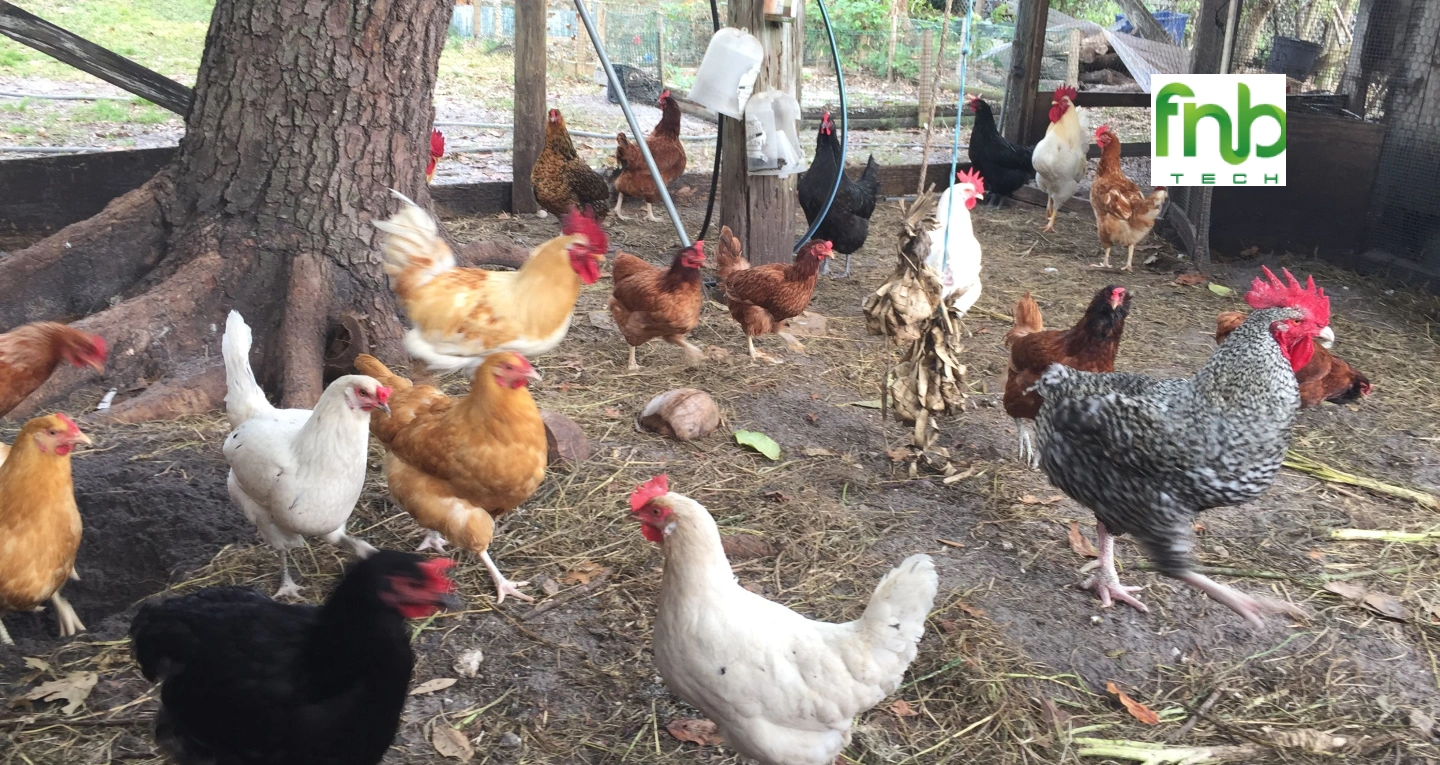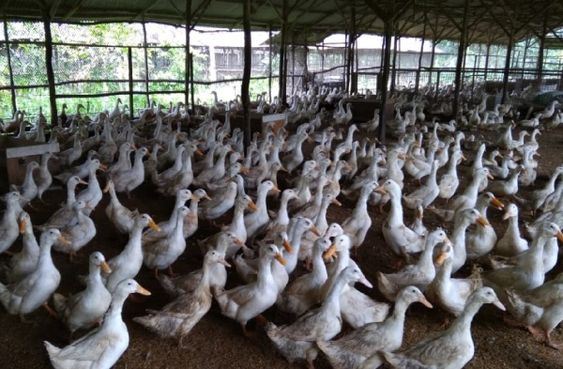Intensive Poultry Farming: A Comprehensive Overview
Intensive poultry farming, a cornerstone of modern agriculture, involves the high-density rearing of poultry species, primarily chickens, for meat (broilers) and eggs (layers). This system emphasizes efficiency, productivity, and cost-effectiveness, leveraging advanced technologies and management practices.
Benefits of Intensive Poultry Farming
- Increased Production: Intensive systems optimize space, feed, and environmental control, leading to significantly higher yields per unit area compared to traditional methods.
- Economies of Scale: Large-scale operations benefit from reduced costs per unit of production due to bulk purchasing, specialized equipment, and labor efficiency.
- Consistent Product Quality: Controlled environments and standardized feed formulations result in uniform product quality, meeting consumer demands.
- Rapid Growth: Broilers in intensive systems achieve market weight in a fraction of the time compared to free-range birds, accelerating returns on investment.
- Biosecurity: Strict biosecurity protocols minimize disease outbreaks, protecting both animal health and economic stability.
Goals of Intensive Poultry Farming
- Maximize Production Efficiency: Optimize resource utilization (feed, water, space) to achieve the highest possible output.
- Ensure Product Safety: Implement rigorous hygiene and sanitation practices to produce safe and wholesome poultry products.
- Animal Welfare: Strive for optimal bird health and comfort within the constraints of the system.
- Environmental Sustainability: Minimize the environmental impact through waste management, resource conservation, and pollution control.
- Economic Viability: Generate sustainable profits for farmers while providing affordable poultry products to consumers.
Key Components of Intensive Poultry Farming
- Housing: Modern poultry houses are large, climate-controlled structures with automated systems for feeding, watering, and waste removal.
- Ventilation: Effective ventilation is crucial for maintaining optimal air quality, temperature, and humidity, preventing disease outbreaks.
- Lighting: Artificial lighting programs manipulate day length to control egg production in layers and promote growth in broilers.
- Feed and Nutrition: Nutrient-dense feed formulations are provided to meet the specific needs of different poultry stages.
- Biosecurity: Strict protocols, including isolation, disinfection, and personnel hygiene, are implemented to prevent disease transmission.
- Health Management: Regular vaccinations, disease surveillance, and prompt treatment are essential for maintaining flock health.
- Waste Management: Proper handling and disposal of poultry manure are vital for environmental protection and public health.
Ideas for Improving Intensive Poultry Farming
- Precision Agriculture: Utilize data analytics and sensors to monitor bird health, optimize feed formulations, and enhance environmental control.
- Alternative Protein Sources: Explore sustainable and affordable plant-based protein alternatives to reduce reliance on traditional feed ingredients.
- Welfare Enhancements: Implement enrichment programs and behavioral considerations to improve the well-being of poultry.
- Environmental Mitigation: Develop innovative technologies for reducing greenhouse gas emissions, water consumption, and waste generation.
- Consumer Education: Promote transparency and engage with consumers to build trust in intensive poultry production.
Topic Suggestions for Further Research
- The impact of different housing systems on poultry welfare and productivity.
- The role of nutrition in preventing disease and improving bird performance.
- The effectiveness of various biosecurity measures in controlling infectious diseases.
- The environmental footprint of intensive poultry farming and strategies for mitigation.
- Consumer perceptions and preferences regarding poultry production methods.
- Economic analysis of intensive poultry farming systems.
- The potential of alternative protein sources in poultry diets.
Advantages of Intensive Poultry Farming
- High Efficiency: Optimized resource utilization leads to maximum output per unit of input.
- Cost-Effective: Economies of scale and technological advancements reduce production costs.
- Consistent Supply: Year-round production ensures a stable supply of poultry products.
- Food Security: Contributes to global food security by providing affordable protein sources.
- Job Creation: Supports rural economies through employment opportunities.
Challenges and Considerations
- Animal Welfare Concerns: Critics raise questions about the welfare of birds confined in intensive systems.
- Environmental Impact: Poultry production can contribute to air, water, and soil pollution.
- Antimicrobial Resistance: Overuse of antibiotics in poultry can contribute to the development of drug-resistant bacteria.
- Disease Outbreaks: Intensive systems can be susceptible to rapid disease spread.
- Public Perception: Negative perceptions of intensive farming can impact consumer demand.
Welfare Challenges in Intensive Poultry Farming
- Overcrowding: High stocking densities can lead to stress, aggression, and increased disease transmission.
- Poor Environmental Conditions: Inadequate ventilation, temperature extremes, and poor air quality can negatively impact bird health and comfort.
- Physical Limitations: Confinement restricts natural behaviors, such as dust bathing, foraging, and perching, leading to frustration and impaired welfare.
- Beak Trimming: A common practice to prevent feather pecking, beak trimming can cause pain and distress.
- Disease and Mortality Rates: Intensive systems can be susceptible to disease outbreaks, resulting in high mortality rates and suffering for surviving birds.
- Slaughter Conditions: The handling and transportation of birds to slaughter can cause stress and injuries.
Welfare Indicators
To assess the welfare of poultry, various indicators are used, including:
- Physiological indicators: Measurements of stress hormones, immune function, and body condition.
- Behavioral indicators: Observations of natural behaviors, abnormal behaviors (e.g., feather pecking, cannibalism), and social interactions.
- Production parameters: Egg production, feed conversion ratio, and mortality rates.
Improving Welfare in Intensive Poultry Farming
- Enriched Environments: Providing environmental enrichment, such as perches, dust baths, and foraging materials, can improve welfare by allowing birds to express natural behaviors.
- Reduced Stocking Density: Lowering the number of birds per square meter can reduce stress and disease transmission.
- Improved Ventilation and Climate Control: Maintaining optimal air quality and temperature is essential for bird health and comfort.
- Pain Management: Developing alternative methods to beak trimming and effective pain management strategies for common poultry procedures.
- Genetic Selection: Breeding for traits that enhance welfare, such as reduced aggression and improved feather cover.
- Slaughter Handling: Implementing humane handling and transport practices to minimize stress and injuries.
- Monitoring and Auditing: Regular welfare assessments and third-party audits can help identify and address welfare issues.
- Consumer Education: Raising consumer awareness of welfare issues can drive demand for higher welfare products.
Ethical Concerns
- Pain and Distress: Beak trimming is a painful procedure that can cause long-term discomfort.
- Impaired Behavior: The beak is a crucial sensory organ, and its removal can affect a bird’s ability to eat, drink, and interact with its environment.
- Questionable Effectiveness: While beak trimming can reduce cannibalism, it does not eliminate the underlying causes, such as overcrowding or nutritional deficiencies.
- Animal Rights Perspective: Many animal welfare advocates argue that beak trimming violates animals’ rights to bodily integrity and natural behavior.
Improving animal welfare in intensive poultry farming is a complex challenge that requires collaboration between farmers, scientists, policymakers, and consumers. By implementing welfare-enhancing practices and considering alternative systems, the industry can move towards more sustainable and ethical production methods.






